Review for Star Trek - Deep Space Nine - Series 2 (Slimline Edition)
Introduction
Season 1 of Deep Space Nine was an odd beast, which by all critical measure should not have spawned the show that it did. It had the best pilot episode of all Star Trek shows so far in The Emissary, but what came after that was really quite disappointing, sixteen episodes of Star Trek that looked and felt like weak Next Generation plots, eschewing the possibilities of serialization that the static location of a space station allowed for standalone episodes. There were aliens of the week, diseases of the week, scientific quandaries of the week, and a distinct lack of trust in the new format, given the number of TNG guest stars that paid a visit. But during the mediocrity, the show also managed some excellent character development and no little world building. But it was only the final two episodes of Deep Space Nine Season 1 that hinted at what this show was capable of. The standalone Duet might just be the best hour of Trek ever made, but it was the final episode that put that world building to use, revealing a kind of Star Trek we had never seen. If Deep Space Nine was to grow and prosper, it would need to do more of the kind of storytelling we saw in ‘In The Hands of the Prophets’, and less of the TNG-lite stuff. Season 2 not only kicks off with that in mind, it also reveals a weapon in its arsenal that no other Trek had wielded before, a multi-episode story arc.
At the edge of the final frontier there’s... politics. The planet Bajor has finally been returned to its population after decades of occupation, oppression, and exploitation by the Cardassian Empire. The wrecked world needs help getting back on its feet, and the provisional government has called in the Federation and Starfleet to administer the space station the Cardassians left behind, now dubbed Deep Space Nine, in the hope that it will become a hub for trade and commerce in the sector. To that end, and to move the Bajorans toward eventual Federation membership, Commander Benjamin Sisko has been assigned to DS9, although he only reluctantly accepts the posting. And not all of the Bajorans want the Federation there, certainly not the Bajoran liaison, his second in command, Major Kira Nerys. But when they discover a wormhole in the nearby Denorius Belt, the first known stable wormhole in existence, offering a shortcut to the Gamma Quadrant, Bajor suddenly becomes the centre of galactic attention, and that might be just the excuse the Cardassians need to move back in again.
26 episodes of Season 2 of Star Trek: Deep Space Nine are presented across 7 discs, with extras from Paramount Home Entertainment.
Disc 1
1. The Homecoming
2. The Circle
3. The Siege
When unsettling rumours of Cardassians still holding Bajoran prisoners in internment camps arise, Major Kira is raring to go on a rescue mission, especially when one of the prisoners is supposed to be the renowned Bajoran Resistance fighter Li Nalas. The return of a legend is just what Sisko needs at this point, as his mission to prepare Bajor for Federation membership looks precarious indeed. A militant group called the Circle has risen on Bajor wanting to throw all aliens off world, and keep Bajor for the Bajorans alone. They’re strong, they’re armed, and they have powerful, if clandestine backing. When Odo discovers the source of The Circle’s arms, Sisko might have a lever to tip things back in favour of the Provisional Government. But it comes too late. There’s a coup on Bajor, and it being a Prime Directive situation, Federation personnel have just hours to evacuate the system. Not even Li Nalas could resolve this problem, especially as it turns out that the man and the legend don’t match.
4. Invasive Procedures
Trills are a joined species. A wormlike symbiont joins with a humanoid host to create a gestalt entity, and when the host dies, the symbiont is passed to a new host, along with the accrued memories and experiences of the previous hosts. Once a joining is complete, early removal of the symbiont means death for the host. It’s a privilege granted to only a few in Trill society. And during a plasma storm with the station evacuated, a disaffected Trill named Verad sneaks aboard with a handful of mercenaries to take the Dax symbiont from Jadzia by force.
Disc 2
5. Cardassians
Plain and simple Garak, Deep Space Nine’s resident tailor is somewhat surprised to see a fellow Cardassian on the station, following the withdrawal of his compatriots from Bajor. But the boy Rugal is a war orphan, has been raised by a Bajoran family and has been taught to hate Cardassians. When he demonstrates his feelings to Garak, it immediately blows up into a diplomatic incident, with Gul Dukat suddenly interested in repatriating Cardassian war orphans. But there’s more to this than a sudden need to do the right thing, as Bashir discovers with Garak’s aid.
6. Melora
The Elaysian cartographer Melora Pazlar has been assigned to conduct a survey in the Gamma Quadrant. Coming from a low-gravity world she is effectively disabled in the standard-g environments that Starfleet works in. She’s understandably defensive, if not downright prickly, but Dr Bashir manages to get past her defences. Yet when he comes up with a treatment that would allow Melora to be free of her exoskeleton and wheelchair, she questions just what she has to sacrifice.
7. Rules of Acquisition
The Grand Nagus is back on DS9, with a mission for Quark, who’s set to be the Chief Negotiator for the Ferengi as they expand into the Gamma Quadrant. His first negotiation is to procure 10,000 vats of Toolaberry wine from the Dosai. It could mean untold riches for Quark, but from the beginning, it looks like the Grand Nagus is actively sabotaging the deal. Fortunately Quark has a good advisor on hand, in the form of one of his waiters, Pel. But Pel has a secret...
8. Necessary Evil
It seems like a quick way to make some Latinum, when Quark is hired to break into the former chemist’s shop on DS9, and retrieve a box. But his curiosity got the better of him, and someone shot him for it. The attempted murder naturally falls to Odo to investigate, and it in turn calls to mind an old case on the station, his first case, when he was drafted by Gul Dukat to investigate the murder of that chemist, a murder in which Kira Nerys was briefly a suspect.
Disc 3
9. Second Sight
The fourth anniversary of his wife’s death offers a moment of melancholy for the Sisko family, but things take a more positive turn when Sisko meets a beguiling alien woman named Fenna. Things seem to be going great until she vanishes. And it happens often enough for Sisko to even ask Odo’s help in tracking her down. Meanwhile the ego has landed in the form of Professor Seyetik, a terraformer whose about to advance the science with a spectacular experiment. Only Sisko’s in for a surprise when he meets the professor’s subdued wife, Nidell.
10. Sanctuary
A damaged ship comes through the wormhole, but a far greater problem for the DS9 staff is communicating with its rescued crew. The apparent leader, a woman named Haneek finds it easier to interact with Major Kira, and slowly it becomes clear that they are just the first ship in a band of refugees some three million strong, a race of farmers called the Skrrean who are escaping servitude en masse. They are looking for their promised land, a world of sorrow named Kentanna. While Kira is happy to befriend Haneek, when the Skrreans fixate on Bajor as their promised land, they find that the rest of the Bajorans are less welcoming.
11. Rivals
El Aurians are a race of listeners, which can be useful if you’re an ageless and wise bartender aboard the Starship Enterprise, like Guinan. It can also be lucrative if you’re a conman like Martus, and Martus is now working his shtick aboard the space station, but with Odo not the talkative type, his ‘listening’ isn’t all that successful. But while dwelling in a cell, he encounters a dying alien with a remarkable gaming device that changes Martus’ luck... literally. Suddenly he’s free, found a backer, and opened a gaming establishment on the Promenade, much to Quark’s consternation.
12. The Alternate
Dr Mora, the Bajoran that was assigned to investigate Odo when he was first discovered arrives on the station. Mora nurtured and guided Odo from an unidentifiable metamorphic substance to a sentient humanoid, but it wasn’t a gentle process, especially for Odo, and the two parted on bitter terms. Mora now needs Odo’s help, as a Bajoran probe of the Gamma Quadrant has detected a life form with similar DNA to Odo’s, but an accident on the expedition has unexpected consequences.
Disc 4
13. Armageddon Game
Two warring enemies have finally laid down their weapons and made peace, but to help them maintain that peace, they’ve asked for Federation help in decommissioning and disposing of dangerous bio-weapons called Harvesters. O’Brien and Bashir have lent their expertise, but something goes wrong during the decommissioning process, a security device activates, and the native scientists, Bashir and O’Brien are killed; at least that’s what the alien ambassadors tell Sisko.
14. Whispers
A Gamma Quadrant race, the Parada have been fighting a civil war, but now that it seems peace is imminent, they’ve requested Deep Space Nine as the venue for the peace talks. O’Brien has just returned from Parada to learn what their security requirements are, but when he gets back to the station, he finds everyone’s acting out of character, and he’s being shut out of the security arrangements. It even looks like his wife Keiko and Sisko are conspiring...
15. Paradise
While scouting for potential colony worlds near the wormhole, Sisko and O’Brien find a world already inhabited. But when they beam down they find that their technology has failed, they’re out of contact with the runabout, with no way to beam back. The colony they find has been there for ten years, similarly trapped by circumstance. Their leader, Alixus has managed to create a thriving and prospering pre-technological society, but she isn’t enamoured of the prospect of their new arrivals trying to leave.
16. Shadowplay
While Quark tries to make some illicit profit, and Jake tries to find a way to tell his dad that he’s not a chip off the old Starfleet block, Dax and Odo are in the Gamma Quadrant, tracking down some strange energy readings. They lead to a planet with an isolated community that has a problem. People in the village are disappearing without explanation, and for some reason, no one’s tried looking outside the valley for them. It’s a good thing that Odo is an investigator.
Disc 5
17. Playing God
Dax has a reputation of washing out all the Trill initiates he or she is supposed to mentor, and evaluate for future joining. In fact, Curzon Dax did the same to a young Jadzia years previously. Following that experience, Jadzia swore not to do the same when it came to her turn, but now that her first Initiate Arjin is here, history is repeating itself. Meanwhile, a runabout mission to the Gamma Quadrant retrieves something fantastic, and quite potentially lethal on a cosmic scale.
18. Profit and Loss
A damaged Cardassian ship limps to the station, carrying Professor Natima Lang and two of her students. But in a previous life as a news correspondent, she was involved with Quark during the occupation. The reunion isn’t as sweet as Quark hoped. Natima is understandably distracted, as her students are more than they seem, and the Cardassian Empire wants its citizens back whether they want to return or not. And the station’s resident tailor Garak is happy to oblige the Empire.
19. Blood Oath
When three veteran Klingon warriors come aboard the station, it’s enough to give Security Chief Odo a headache. But Kang, Koloth and Kor are actually there to see Dax, Curzon Dax. Years previously, the four swore a blood oath to avenge the Klingons’ sons, foully murdered by a criminal albino. Curzon was godfather to Kang’s son. Kang didn’t expect to find Jadzia now hosting the Dax symbiont. He’s ready to absolve her of her oath, but against Trill tradition, Jadzia realises that her oath of loyalty and desire for vengeance crosses lifetimes.
20. The Maquis, Part 1
Disc 6
21. The Maquis, Part 2
The peace treaty between the Federation and the Cardassians meant redrawing the borders, creating a demilitarized zone. But Federation colonies inside the zone, and Cardassian colonies refused to relocate, so under the terms of the agreement, they agreed to fall under the protection of the other side, which turned out to be a solution favoured by no one but the politicians. When a Cardassian freighter is blown up near the station, there’s briefly a raising of tension between the Cardassians and the Bajorans before the chilling truth is revealed. The freighter was destroyed by a Federation implosion device. Sisko’s old friend Cal Hudson is the Federation attaché to the DMZ colonies, and they start to investigate, but all Sisko finds is a great deal of bitterness among the former Federation colonists, a bitterness shared by Hudson. Then Gul Dukat shows up, incognito, offering to help Sisko uncover former Federation colonists’ duplicity, but the truth is worse than that, both sides are ignoring the treaty and arming for war. Then Dukat is kidnapped from the station by a terrorist group calling itself the Maquis.
22. The Wire
No end of innuendo and speculation promulgates around Garak. Just why is he on the station following the withdrawal from Bajor, is he a spy, is he an exile, is he just a plain simple tailor? He seems to revel in the obfuscation and misdirection, and it’s a game that Doctor Bashir is happy to play. But when an implant in Garak’s brain malfunctions, it turns out that the only way for Bashir to save Garak’s life is to finally find out who Garak truly is. That’s a search that will take him into the mysterious Cardassian Obsidian Order.
23. Crossover
100 years previously, a transporter accident deposited Captain Kirk and his crew into a Mirror universe where the Terran Empire was a brutal tyranny. They barely made it back, but in parting, Kirk convinced Mirror Spock to change the course of his history for the better. When a malfunctioning warp drive sends their runabout through the wormhole to the Mirror Universe, Bashir and Kira learn what effect that intervention had. It wasn’t good. The Empire became weak, and fell to the Cardassian Klingon Alliance, and Terok Nor is now where Terrans slave to the whim of Intendant Kira. And as Bashir is put to work processing ore, Intendant Kira has fallen in love... with herself.
24. The Collaborator
Following the death of Opaka, the election for the new Kai is at hand, and most likely to win is Vedek Bareil, who is in a relationship with Kira Nerys. But there are ominous signs. First is the return of Kubus Oak, an exiled Bajoran minister that collaborated with the Cardassians. Vedek Winn of all people is willing to allow him to return to Bajor, as Kubus claims to know the true instigator of the Kendra Valley massacre. It’s a revelation that will have Kira questioning both her faith and her love.
Disc 7
25. Tribunal
It was supposed to a rare vacation for the O’Briens, but their runabout is intercepted by a Cardassian warship, and Miles O’Brien is forcibly removed, arrested and taken to Cardassia. It’s a capital crime, and in Cardassia, the verdict is already known before the trial begins. The man assigned to defend him is proud that he has never won a case in his career. O’Brien’s only hope is for the DS9 crew to prove his innocence, although first they’ll have to find out what he’s accused of.
26. The Jem’Hadar
Just a class field trip, a chance for a little father son bonding for Commander Sisko and Jake. But then Nog had to come as he was Jake’s science partner, and then Quark invited himself to bend Sisko’s ear about station advertising. A quiet trip to an uninhabited Gamma Quadrant planet... Only suddenly Sisko and Quark are captured by an imposing, reptilian race, and Jake and Nog are out of their depth, on board the runabout in orbit. All that traffic through the wormhole has been noticed by a powerful entity in the Gamma Quadrant, and the Dominion isn’t pleased about these unwanted Alpha Quadrant visitors. They’ve got a message for the Federation. While those back at Deep Space Nine try to figure out how to respond, it seems that Sisko and Quark’s only chance for escape is their fellow captive, a mysterious telekinetic alien named Eris.
Picture
Deep Space Nine gets a 4:3 regular transfer that is just about passable on an SD screen, and you have to be a little more forgiving to watch it on an HD panel. Just like for The Next Generation DVDs before it, the show may have been shot on film, but its special effects and final editing were completed on videotape. Even on 480 NTSC, the show will look soft, and it’s a tad softer on PAL DVD with its 576 line resolution. The clarity never approaches that which a DVD can offer, and detail levels are low, colour somewhat faded. There are also some artefacts in the transfer, such as rainbowing (note the pylons of the station during the opening credits for a regular example).
Sound
You have the choice between DD 5.1 English and German, DD 2.0 Surround, French, Italian and Spanish, with subtitles in these languages, Danish, Dutch, Norwegian, and Swedish. I opted for the English track quite naturally, and found that the dialogue was clear, the show’s music and effects came across well, and the surround soundstage was put to decent use in conveying the action sequences, establishing the show’s ambience. It’s a pretty decent surround presentation for a 90s TV show.
Extras
This slimline budget release of Deep Space Nine collects the seven discs of the clamshell box release, and repackages them into four thinpak cases, with one disc getting a case of its own, and the other six sharing three cases, held on opposing inner faces. They’re all held in a sturdy card slipcase, with the art not season specific (Pilot episode Kira, bald Sisko, and future commbadge out of place in Season 2).
The discs take their time in loading up, insisting on sending a runabout through the wormhole before letting us see the main menu screens. The episode discs merely list the episodes, selecting one will allow you access to language options, scene select, play episode, and navigate back to the main menu.
All of the extras are on disc 7, beginning with New Frontiers: The Story of Deep Space Nine, which lasts 15:11. This takes us back to the start of the series, and the creators look at what makes it different from the rest of the Treks. There’s also a look at the characters and how they evolved over Seasons 1 and 2.
Michael Westmore’s Aliens lasts 12:02 and he takes a look at some of the alien make-ups he did for this season, as well as some of the critters he created such as the Cardassian Vole, and the Dax Symbiont.
Deep Space Nine Sketchbook lasts 10:52 and Rick Sternbach and other designers do a compare and contrast of concept designs and final props used in the show.
Quark’s Story lasts 11:29, and Armin Shimerman is interviewed about his nefarious character and how he and the other DS9 Ferengi redeemed a race that had rapidly become a joke on TNG. The interviews are captured in 1992, 1996, and 1999.
Crew Dossier: Jadzia Dax has Terry Farrell interviewed about her character arc on the show, and the challenges she faced playing the science officer. There’s some bonus footage with the character wearing the TNG Trill latex appliance, before they decided on the spots. Unfortunately there’s no mention of why the character exited at the end of season 6. This runs to 17:34.
New Station, New Ships lasts 5:18 and looks at some of the models used in the series, from DS9 itself to the runabouts and the Cardassian warships.
Finally there are 10 Easter Eggs on this disc, Section 31 Files as they are called, running to 2 or 3 minutes in length, and offering interesting soundbites on notable episodes such as Crossover, Blood Oath, Invasive Procedures and so on, input from the writers and the cast, as well as a piece with Armin talking about Wallace Shawn who played Zek, and Andrew Robinson on the Garak Bashir relationship.
Conclusion
If Season 1 was where Deep Space Nine lacked for an identity, where it constantly aped the TNG formula of episodic adventures in a format more suited for serial storytelling, then Season 2 was where it discovered that identity, and defined its characters in a more satisfying way. Season 2 was where Deep Space Nine truly showed what it was capable of, and became the show that is so beloved of a select subset of Star Trek fans, a show that has stood up remarkably well, even while its stablemates have started to show the signs of age.
It wasn’t an immediate transformation though, and there were the odd TNG style episodes still slotted into the run. Melora was very much a TNG message episode, with a differently abled crew member arriving for an episode of low gravity and wheelchairs, and acceptance of one’s natural abilities, with a very unbelievable romance for Doctor Bashir. Second Sight also allowed for another alien of the week, and this time some romance for Ben Sisko on the anniversary of his wife’s death. The worst episode of the run is Sanctuary, when the psoriasis people turn up in their millions and expect to be welcomed by the Bajorans as it’s their divine right to live on Bajor as a refugee colony. It’s an awful, awful episode, which presents its alien characters as children that sulk when they don’t get their own way, and wastes what could have been a great premise for a long term story arc. You can always search out Alien Nation though. Another show that I dislike is the cult primitivists episode in Paradise, which sees Sisko in a box when he doesn’t stand up to the gravel voiced leader of a cult that shuns all technology and modern convenience to live the way humanity is supposed to. That the leader, Alixis reminds me so much of Janeway in voice and bearing, might be one reason why I came to loathe Star Trek Voyager.
But everything else in this run of 26 episodes goes in some way to expand on the characters, the universe, and the story, even the weaker episodes which on the surface look like stand alone TNG style alien/problem/technobabble of the week. The season kicks off with a statement of intent, a reminder that as Deep Space Nine is a static location, that events that take place in the story will have lasting consequences further down the line, and that the format is best served by serialised storytelling. We get a three episode arc that looks at Bajor, and continues on from the end of Season 1’s finale, In the Hands of the Prophets. Bajor still isn’t a stable society, and at the start of this arc, its uncomfortable relationship with the Federation is brought into focus, when an uprising threatens everything that Sisko has worked for over the last year. There’s a great turn from Frank Langella as a Bajoran minister, and Louise Fletcher returns as the manipulative and power seeking Vedek Winn.
Invasive Procedures is an example of a standalone concept, with the station left with a skeleton crew during a plasma storm allowing for intruders to get aboard, and a Trill to try and steal the Dax symbiont. It offers some insight into Trill society, something the later episode Playing God will also do, but an interesting thing about this early episode is that Quark’s behaviour here has consequences that lasts through the season. There’s no handy reset button. Cardassians is a fantastic story that looks at the plight of war orphans, while also opening up Cardassian society, the politicking, machinations, and the long game that they play. On top of that, it’s a Garak and Bashir episode, which rapidly became highlights of the series. See also The Wire in this season for another example.
Rules of Acquisition is another Ferengi episode which expands on their society, and tries to make sense of their parochial attitude towards women. It’s another good episode for the Ferengi at this point, and a pleasant return of Grand Nagus Zek, but the most important thing is that it’s the first mention of the Dominion, the first hint and rumour which slowly gets added to over the season, leading to the game-changing season climax. It’s the little hints like this that make even mediocre episodes memorable, like The Alternate (where Odo’s origins are explored, and his mentor introduced), and Shadowplay, with further rumours of scary Changelings and the Dominion added into the mix. There are a fair few episodes that look into Odo’s character and his past, and Necessary Evil is another one, where an attempt on Quark’s life brings back memories of Odo’s first case as an investigator under the Cardassian occupation, and a stark reminder that Kira used to be a terrorist.
While the Bashir and Garak episodes are fun, Bashir and O’Brien episodes are just as much fun albeit for different reasons. The two are the unlikeliest of friends, given how they started off, and that awkwardness lasts until Rivals, where the two get into a rather odd racquetball game (it’s a bit of a gimmick episode that quantifies and distils luck, but one that got further exploration in a couple of mediocre Deep Space Nine spin-off novels, The Laertian Gamble and Warped). But Armageddon Game sees O’Brien and Bashir finally bond, the start of a solid friendship. It’s also the start of the Torture O’Brien episodes, which sees DS9’s everyman get into all sorts of compromised situations. He may have escaped the box in Paradise, but he’s infected with a Bio-weapon in Armageddon Game, has a paranoid clone in Whispers, has a mirror universe version slaving away in Crossover, and gets captured, tortured and put on trial for his life in Tribunal. And that’s just one season worth.
A surprisingly weak episode for me is Blood Oath, which sees the return of three original series Klingons, having surprisingly become centenarians. Kor, Koloth and Kang, saw the original actors reprise their roles, having grown bumpy heads in the years since they battled Kirk, showing up to invoke a promise made with Curzon Dax, a promise which despite Trill society rules, Jadzia is determined to fulfil. In a rare character misstep, this is the introduction of butch Jadzia, ready to kick butt and take names, wholly at odds with the mischievous hedonist that had finally been developed in season 2. What’s worse is that this wasn’t the end of it, but a character development that would wind up with her marrying Worf, and becoming even more butch. The episode also then wimps out on answering the question that it poses.
Then DS9 adds dimension to its universe once more with the two part Maquis episode. TNG set up the Demilitarised Zone between the Federation and Cardassia with a treaty that no-one liked and Deep Space Nine introduced the idea of Federation terrorists, fighting to protect the colonies that the Federation had ‘abandoned’. This was all in service to the forthcoming Star Trek Voyager that would have a mixed Starfleet and Maquis crew. But while that show initially wasted, and then completely forgot its premise, Deep Space Nine took that premise and ran with it, deliciously complicating matters between the Federation and the Cardassians, and bringing the Bajorans into the middle. Sisko has to face the pain of betrayal when the Federation turns on its own, and there’s no easy answer, no quick fix. This episode also starts an arc of redemption for the series villain Gul Dukat, former leader of the occupation, offering to help Sisko quietly take care of the Maquis problem, but brought low when captured by the Maquis, and then scapegoated by the Cardassian government. He’s almost a sympathetic figure here.
Just like Blood Oath, Crossover is another weak episode, itself a sequel to the original series episode Mirror, Mirror which had Kirk crossing over to a parallel universe where everyone was evil. He tried to fix things there, and Crossover extrapolates the consequences of that act, assuming things didn’t go well. It’s a fun chance for the actors to deliciously subvert their characters, and there has to be something said for the sadistic insouciance of Intendant Kira, and it would have worked fine as a one-off. But every season or so, there would be a mirror universe episode, as if the writers and creators got a little bored with the story they were creating and just wanted to play for 44 minutes. It got pretty bad by the end, and this is where it all began.
Back to Bajor and politics with the Collaborator, with the elections for the next spiritual leader the Kai coming up, and Vedek Winn wanting to win in a bad way. She’s the last person anyone with sense would want as a spiritual leader, which is why, for the sake of drama, and a brilliant story, she does win. How Louise Fletcher created such an affable, soft spoken, politically opportunistic, steely, dangerous, likeable and loathsome character is beyond comprehension, but Winn is a brilliant character, as strong and effective as Garak in the effect that her rare appearances on the show had.
The final episode of the series, The Jem’Hadar is where everything changed for Deep Space Nine, with the advent of the big power opposing the Federation, and the realisation that with their superior technology and ruthless tactics, the Dominion wasn’t a force to be dismissed easily. The final episode sees a Galaxy Class starship destroyed, and the implication is that it could just as easily have been the Enterprise.
Season 2 is where Deep Space Nine found its voice, figured out the kind of stories that it wanted to tell, and it’s where it established the universe that it wanted to play in, introducing the Maquis as a problem in the Alpha Quadrant, and the Dominion in the Gamma Quadrant. This was a show that was in it for the long run, and things were going to get dark and dirty. This was a show where characters grew and developed as the series unfolded, and where events and actions had lasting consequences. That sort of storytelling is standard now, but back in the early nineties, it wasn’t the done thing, and until Enterprise’s Xindi arc, it was something that Star Trek just didn’t do as a rule. Season 1 might have had you scratching your head at what you were buying into; Season 2 is where you become a Deep Space Nine fan.
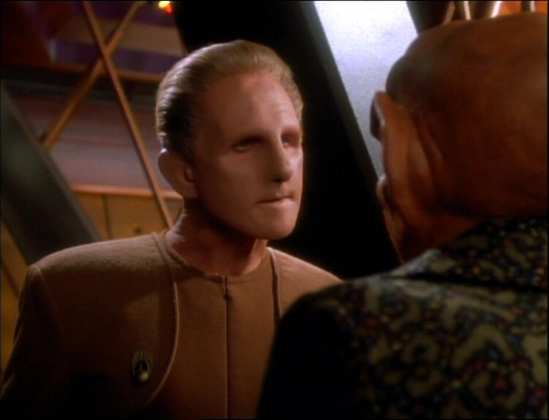
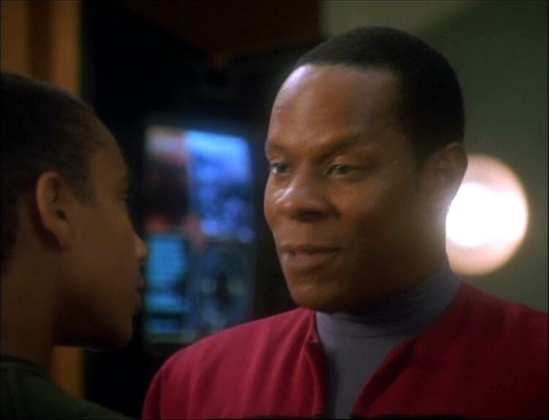
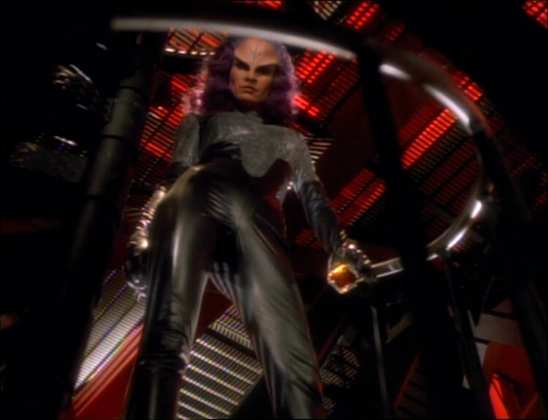
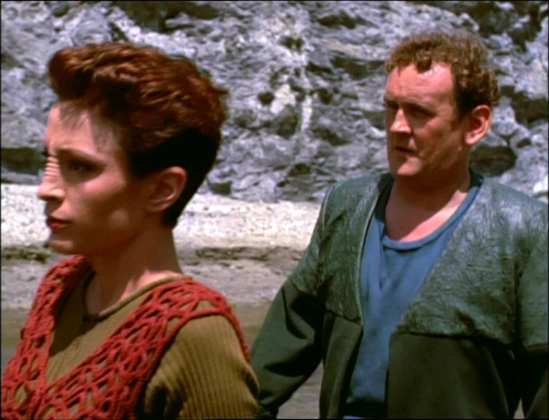
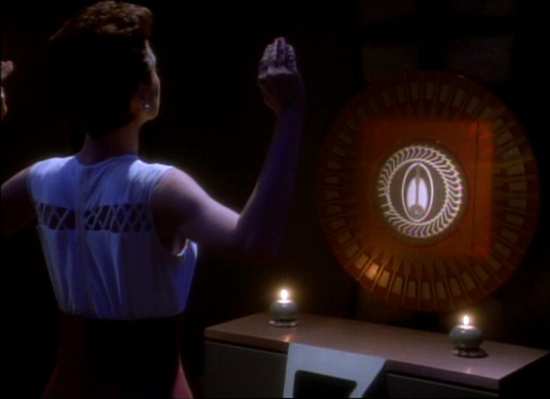
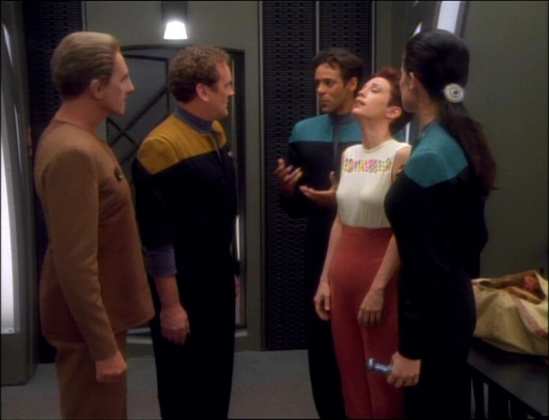
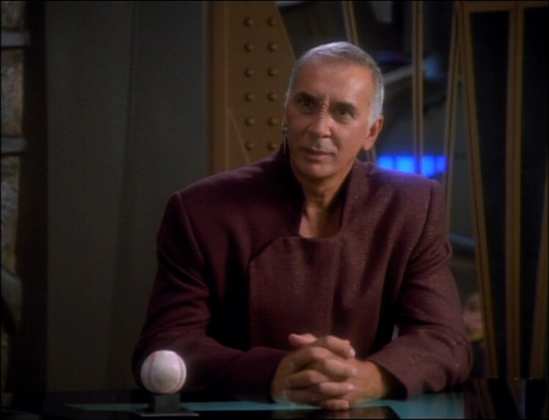
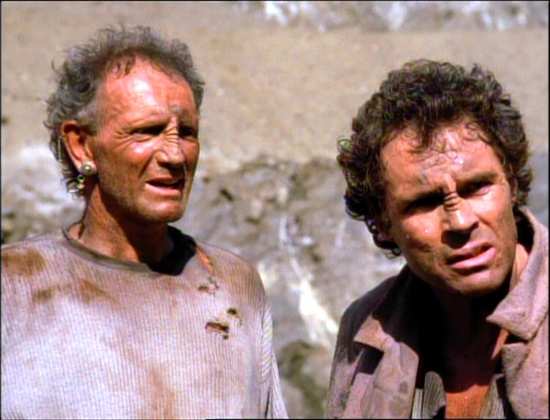


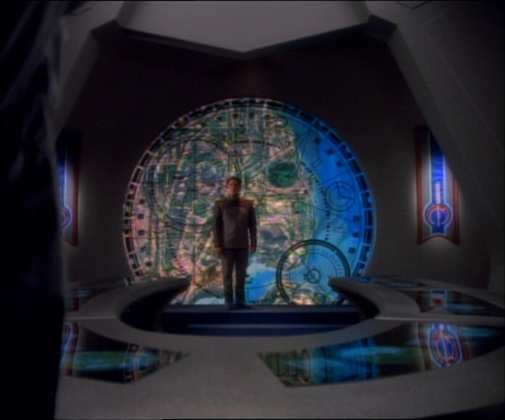
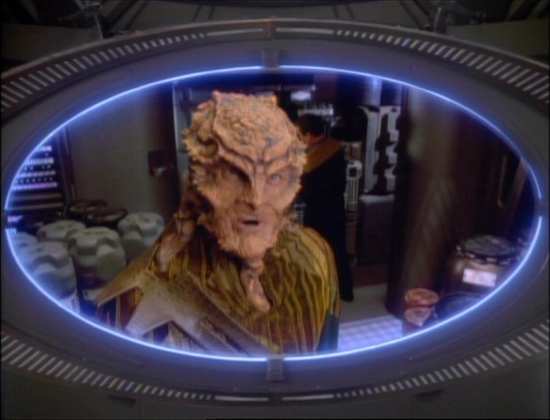
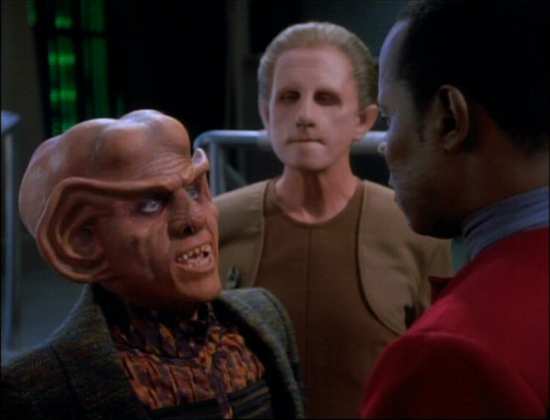
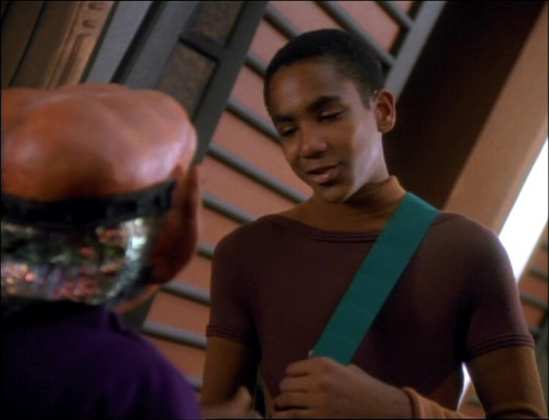
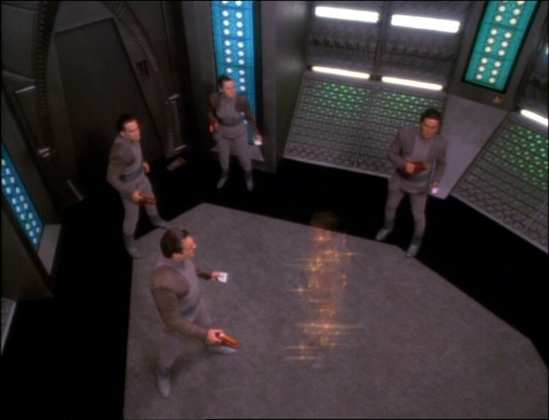
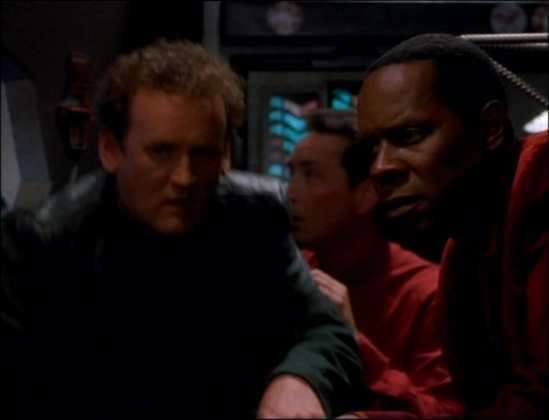
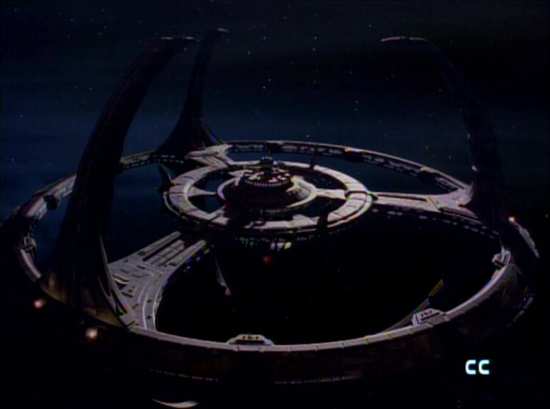
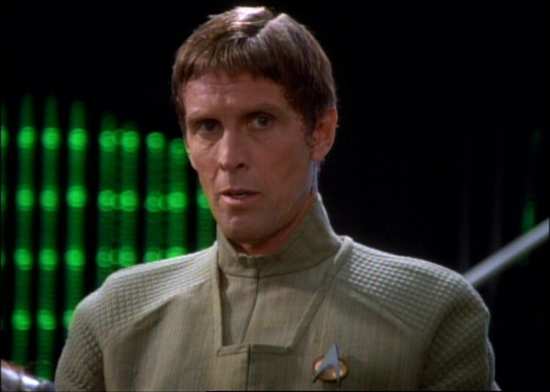
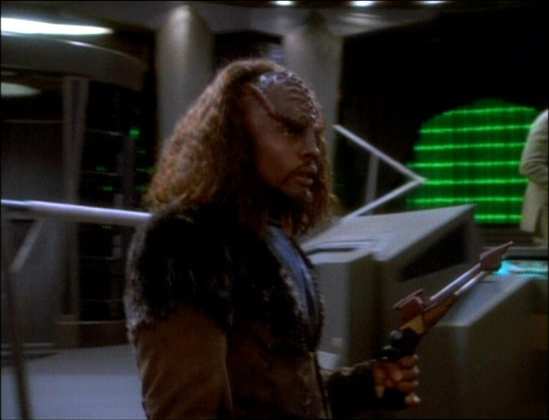
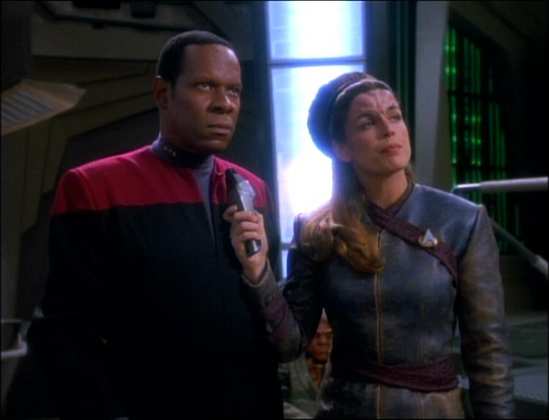
Your Opinions and Comments
Be the first to post a comment!